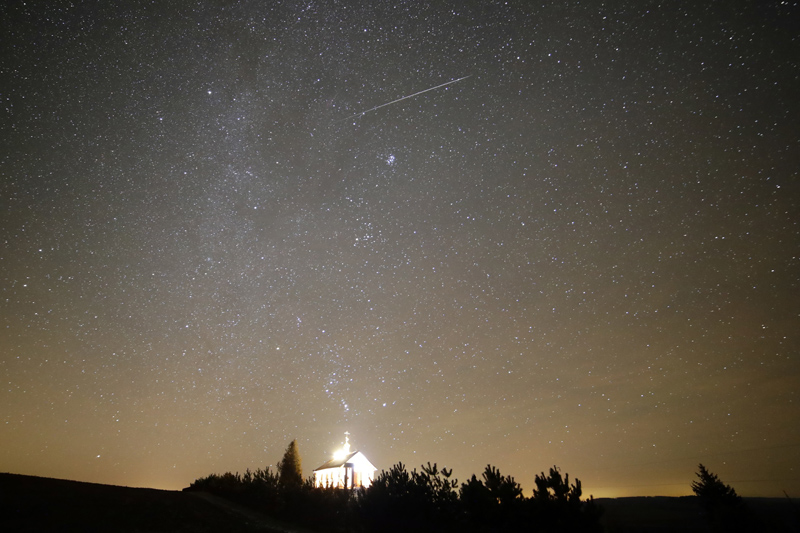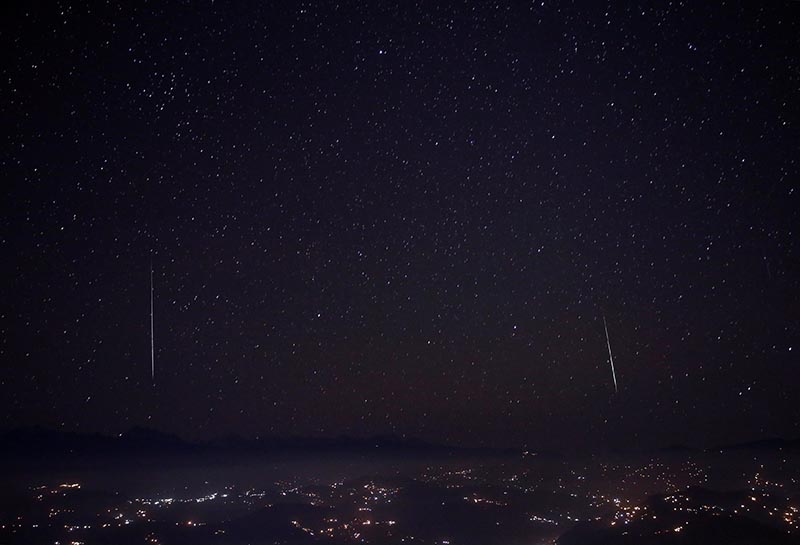Geminid meteor shower to illuminate Nepali sky tonight
KATHMANDU: Amateur skygazers and ‘dedicated’ sky enthusiasts across the country will witness one of the most spectacular meteor showers of the year light up the Nepali sky tonight.
Talking to THT Online over phone, Suresh Bhattarai, chairman of the Nepal Astronomical Society (NASO) said,"The Geminid Meteor shower was active since December 4 and will last till December 16."
“The annual meteor shower, however, would reach its peak tonight when as high as 120 meteors per hour would delight the Nepali sky.”
“This intensity of the meteor fall can be seen under optimal conditions making them fairly easy to spot,” he said.
“All meteors are associated with comet but Geminids. They are associated with asteroid-3200 Phaeton, a ‘rock comet’. Some debris of the rock comet burns up in the sky creating a trail as the asteroid barrels through the Earth’s atmosphere.”

The rock comet will make close approach to Earth while orbiting the Sun. The meteor will move slowly from a low angle across the sky creating the fire ball to last long.
“Though the celestial spark will be visible from 8:45 pm onwards, the best time to watch it is at midnight, fairly 12:00-3:56 pm, as the moonlight might affect the visibility later.”
“There is not a particular direction to watch the celestial spark. The Gemini constellation rises in the East and sets in the West. One might have to look at Zenith during midnight to get the view.
The meteor shower was named Gemind as it appears to emerge from the Gemini constellation.
“The skygazers can go to their roof top or some area with dim light to watch the phenomenon. They can also click pictures of the phenomenon,” stated Bhattarai.
“They can watch the phenomenon with naked eyes and do not need binocular or telescope as such,” he added.
“Our team of astrophysicist from NASO will be going to Nagarkot to capture a nice view of the shower,” further stated Bhattarai. “I would suggest you to wear multiple layers of clothes to keep yourself warm as you will be outside for a while."
The meteor shower will also be visible from the Southern hemisphere.






